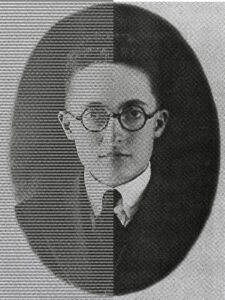Reviewing e-bike and e-scooter laws again
Electric bicycles are rapidly becoming popular in both rural and urban areas. They are great for assisting riders going uphill, into the wind and practically anywhere. However, in my travels, I see violations on a daily basis.
Some of the violations I have seen include people riding e-bikes on the wrong side of the street, riding them at night after dark without head and tail lights, riding on sidewalks, and riding through red lights and stop signs at intersections. I have seen them on roads where the speed limit is above 30 mph (illegal for e-bike riders). I have seen riders who appear to be under 16 years of age; furthermore, I have yet to see an e-bike rider signal a turn.
At the request from a reader of the Plattsburgh Press-Republican, it’s time for another review.
Under section 102-c of Vehicle and Traffic Law, an e-bike is defined as a bicycle that is no more than 36 inches wide, has an electric motor of less than 750 watts, is equipped with pedals, and meets the equipment and manufacturing requirements for bicycles. E-bikes are also excluded from the definition of a motor vehicle.
The 2020 law places e-bikes into three classes. For a class one e-bike the electric motor provides assistance only when the person riding is also pedaling, and ceases to provide assistance when the speed reaches 20 mph. A class two e-bike has an electric motor that may be used exclusively (without pedaling) to propel the bicycle up to speeds of 20 mph.
A class three e-bike can propel the bicycle without the rider pedaling up to 25 mph, but is only allowed in a city with a population of one million or more. That means it is limited to use in New York City only.
No person less than 16 years of age is allowed to operate an e-bike. Furthermore, e-bikes are not allowed on public lands or property, other than highways, unless allowed by regulation or order.
E-bikes cannot be operated on a sidewalk unless allowed by local law or ordinance by the city, village, or town that has jurisdiction over sidewalks. As far as I know, no municipality in Northern New York has such a local law or ordinance.
Also, it is illegal to park an e-bike in a manner that interferes with the free passage of pedestrians on a sidewalk, and all e-bike riders must yield the right-of-way to pedestrians.
Persons riding e-bikes shall ride single file and may only be operated on streets and roads with a posted speed limit of 30 mph or less.
E-bikes are subject to all rules, regulations and provisions applicable to bicycles and bicyclists. For example, they must be ridden on the right side of the street, with traffic. They must obey traffic signals, signs and pavement markings, and be equipped with a bell or horn, and a white light on the front and a red light on the rear when riding after dark. The law also covers electric scooters, which are defined as a device weighing less than 100 pounds that has handlebars, a floorboard that can be stood upon or a seat that can be sat upon by the operator, an electric motor, and can be powered by the electric motor and/or human power. It can have a maximum speed of no more than 20 mph when powered solely by the electric motor on a paved level surface.
E-bikes and scooters can be fun and practical, but riders must know and obey the applicable laws for operating them.




